
With my aim to make this a self-sufficient eco resort, I dedicate this page to the various methodologies I researched and implemented. Above all, how to provide cold beers to our customers!
Electricity
That was first and foremost, requiring it for my online job and for web marketing, but also the easiest to implement, having already lived in a truck for five years while traveling around Europe.
 First the solar panel – 100W, which proved enough for my laptop, smartphone, a few LED lights and my minimal needs. Even with many guests charging their small devices or laptops over the day, as long as the sun is strong. Over night I use the battery, reserving that for myself. If I retire for the evening to watch a movie and drain my laptop battery by morning, I can squeeze some more juice out of the solar system battery to charge my computer. But once that is fully charged and the sun is in full force on the panel, I can charge the drained laptop batteries of my guests, since such recharges suck the most energy, especially if the batteries have been fully drained. The panel sells for $70 at CD-R King in Puerto Princesa with a 6 year warrantee, or a German model is available in a solar specialty shop for $220 with a ten year warrantee. But considering that I once forgot to take the panel off the beach before retiring, the high tide waves ripped it loose from the system and took me three hours the next morning to find it buried under a foot of sand since it was dragged down to low tide about 15m away, I am happy with the resilient quality of the cheaper Filipino model.
First the solar panel – 100W, which proved enough for my laptop, smartphone, a few LED lights and my minimal needs. Even with many guests charging their small devices or laptops over the day, as long as the sun is strong. Over night I use the battery, reserving that for myself. If I retire for the evening to watch a movie and drain my laptop battery by morning, I can squeeze some more juice out of the solar system battery to charge my computer. But once that is fully charged and the sun is in full force on the panel, I can charge the drained laptop batteries of my guests, since such recharges suck the most energy, especially if the batteries have been fully drained. The panel sells for $70 at CD-R King in Puerto Princesa with a 6 year warrantee, or a German model is available in a solar specialty shop for $220 with a ten year warrantee. But considering that I once forgot to take the panel off the beach before retiring, the high tide waves ripped it loose from the system and took me three hours the next morning to find it buried under a foot of sand since it was dragged down to low tide about 15m away, I am happy with the resilient quality of the cheaper Filipino model.
 For the battery I decided on a deep cycle, about 250AmH (the big ones used to start the big transport trucks), $155 from Motolite. Deep cycle is better because you can more quickly kill a regular car battery if draining it below 12V. The deep cycle option is more expensive, but should last longer to make it worthwhile, and is safer to drain more. Use the styrofoam packaging that comes with it to raise the battery up in order to insulate it from the ground, as any wires laying on the ground can cause parasitic drain and make your system less efficient.
For the battery I decided on a deep cycle, about 250AmH (the big ones used to start the big transport trucks), $155 from Motolite. Deep cycle is better because you can more quickly kill a regular car battery if draining it below 12V. The deep cycle option is more expensive, but should last longer to make it worthwhile, and is safer to drain more. Use the styrofoam packaging that comes with it to raise the battery up in order to insulate it from the ground, as any wires laying on the ground can cause parasitic drain and make your system less efficient.
Between these two you need a regulator, otherwise known as a solar controller. Its job is to decide how the energy flows. For $80 I got one at CD-R King which has a capacity for five more panels, if I ever want to expand. It has a nifty display which shows how many amperes (power) the sun is providing and how many amperes the various devices and appliances are drawing. For example, if at 9am I am charging a still half depleted laptop, it might draw 3amps while the sun provides 4. But if I plug in a guest’s fully depleted laptop, the consumption jumps to 7amps, meaning that 4 is only provided by the sun and 3 needs to be pulled from the battery. This further drains my battery and reduces its longevity, so I kindly ask my guest to wait an hour and a half until my computer has fully charged and the sun is out in full force. Then I might get 6 amps total and only draw 5 amps, meaning that 1 amp is left over to start charging up the big battery. No worries though, customers can be very forgiving, if they understand and appreciate your self-sustained living!

For lighting, I mostly use 12V energy saving bulbs, sometimes LED (although those little lamps tend to die faster in the salty air). Just make sure you are always very careful how you connect the polarities. You are dealing with a direct current system, not alternating current like with a regular wall socket. If you do not hook up the negatives and positives correctly, you will surely fry something.
For this you can use regular speaker cable, but the stronger the insulation the lesser the potential drain. You can separate the negative and positive wires to help prevent potential drain, but make sure you have a thick enough cable for the solar panel, especially if the cable is lying on the ground.
 Hook it up with light switches and you are ready to go. There should be a suitable (explain your 12V system to the hardware store) breaker switch at one of the leads of the battery, in case there is a system short, or if you want to completely shut it down, such as when you are away for a longer time or it is raining heavily.
Hook it up with light switches and you are ready to go. There should be a suitable (explain your 12V system to the hardware store) breaker switch at one of the leads of the battery, in case there is a system short, or if you want to completely shut it down, such as when you are away for a longer time or it is raining heavily.
Read the regulator instructions to help you connect it all, as there is an important order (battery first, then solar, then devices). The regulator draws on either the panel, the battery, or some combination of each to produce 12V, which you use for your system.
 Typically, you connect this 12V output to an inverter, either 110 (US) or 220 (Europe) volts. Check the adaptor of any device you plan to plug into the inverter, as most can handle either 110 or 220, but some only one of the two. The wrong voltage will fry your adaptor! Plug in one or two extension cords into your inverter and, voila, you have a full blown electrical system.
Typically, you connect this 12V output to an inverter, either 110 (US) or 220 (Europe) volts. Check the adaptor of any device you plan to plug into the inverter, as most can handle either 110 or 220, but some only one of the two. The wrong voltage will fry your adaptor! Plug in one or two extension cords into your inverter and, voila, you have a full blown electrical system.
But going from the solar system’s 12V to 110 or 220V and back down to 16V (common for laptops) or 5V for common USB devices like smartphones and tablets, results in a roughly 30% loss of energy. For this reason it is better to keep as much as possible in 12V, like the lighting mentioned above, or use adaptors from 12V to 5V, for example.  You can easily find these online for cigarette lighters. Make sure to also get cigarette lighter splitters, so you can plug in many adaptors. You can snip the wire of the splitter to connect it directly to the 12V output.
You can easily find these online for cigarette lighters. Make sure to also get cigarette lighter splitters, so you can plug in many adaptors. You can snip the wire of the splitter to connect it directly to the 12V output.
You can also use something like a wire connector to make it easy to connect other 12V wires, such as for lighting, to your system. Simply use a good, hard wire to interconnect all the connection points on one side of the connector, using the empty slots on the other side to connect other parts of your 12V system.

cigarette lighter splitter

wire connectors
Note: inverters are rated in watts. Watts = Volts x Amperes. Look at the output of your adaptor. For example, the typical power consumption of a laptop (which equates to the power output of the adaptor) is 16V at 1.5 Amps. 16×1.5= 24W. So a weak inverter of 300W should be typically sufficient for all your needs. Note also that, in salty air close to the beach, the inverters often break down first, so best to have at least one backup.
Note: the above 12 to 5V adaptor shows 3.1Amps for the iPhone or iPod, but this can be used for any device that can be plugged into a usb socket (5V – same power as that coming out of the USB socket on your computer or laptop). Amperes is just the speed of flow of electrons and more amperes will simply charge your device faster and not damage your battery life like some websites claim (I read many websites on this matter).
Drinking Water
We get water carted in from a natural water well of another island, since our own well is not suitable for drinking water. But bringing in water in this depends on when guests come or go, the gasoline consumption for the boat does not make it very environmental, and it is nice not to be dependent like that in general. I have noticed a lot of dew in the morning, rendering useless any matchboxes left outside over the evening, and often causing shorts and complications with electrical devices such as smartphones. Therefore…

A watercone, which enables anyone, in a most simple fashion, an independent, cheap and mobile solar Potable Water generation from sea or brackish water on the basis of condensation by solar still.
This site shows many other options:

Knapen’s Airwell mimicking an ancient system which you can make from natural materials:

(AWG) Atmospheric Water Generator using solar energy:

This Dew-Harvesting Greenhouse waters itself—and makes clean drinking water:

Simple dew traps in the ground:

Once collected, it may be good to sterilize the water with UV for optimum results, lifestraw being another option.
Refrigeration
Now to the ever most important task of producing cold beers! Preserving fresh fish bought from the locals is another appealing option. One German physician passing through put a big, thick black sock over his beer, soaked it in fresh water and let it sit in the sun for about a half an hour before he popped it open. He claimed it reduced the temperature by around 10C (the local temperature was about 30C or 85F).
After reading many websites, some of which have been mentioned below, I think my easiest option is to get a wind turbine for $400 and a 12V -13C freezer for $600. With that I can produce ice over the evening and throw that into any number of cooler boxes during the day. The wind turbine has a capacity of 1,700W, 17 times the strength of my solar panel, but almost double the capacity of my regulator. This would require either getting a stronger or second regulator, or weaker turbine, but regulators are not that expensive and the higher output is always an appealing option. It does though entail a dependence on wind, not so bad at our kitesurfing camp, or a bit of energy during a sunny day (unless I buy more panels), but a good block of ice can last a few days in a cooler, so all is not lost.
An ancient system using a smaller clay pot inside a larger one, with soil in between. Water the soil and put a damp cloth over top of the opening. As the water evaporates, it cools the interior.  Alternatively, the clay (or possibly other material) pot can be buried in the sand and that watered with the same results.
Alternatively, the clay (or possibly other material) pot can be buried in the sand and that watered with the same results.
An ancient device to be certain, with different variations, but this Nigerian managed to convince Rolex watches he was the inventor and scooped up $100,000 in prize money. Good for him!
Then there is the ISAAC Solar Icemaker which operates in two modes. During the day, solar energy is used to generate liquid ammonia refrigerant. During the night, the generator is cooled by a thermosyphon and ice is formed in the evaporator compartment as ammonia is reabsorbed to the generator.
The ISAAC Solar Icemaker is an Intermittent Solar Ammonia-water Absorption Cycle. The ISAAC uses a parabolic trough solar collector and a compact and efficient design to produce ice with no fuel or electrical input, and with no moving parts.
This site explains the three types of solar ice makers, where this one has a lot of useful comments.
This eco site explains how to set up a solar adsorption-desorption refrigerator:

Download the PDF instructions for this solar thermal icemaker:

Development of a simple intermittent absorption solar refrigeration system:

Whew, after all that, think it’s time for a cold brewskie!
Vegetable Garden
Because of the corals here in these clearest waters in the world, there is ample fish, as well as fishermen. From them we can also buy their freely roaming roosters and chicken. Makes the place more quiet in the morning as well. But vegetables are not so easy to get, not being a big part of the local culture.
We manage to get more exotic stuff brought in from the larger towns via our arriving guests, but eventually we’d like to start our own garden. Some guests explained that the beach sand, sprinkled with broken grains of seashells over the years, is full of nutrients and can be mixed with the clay at the back of the property and the compost we have begun to build.
Some fascinating reading is permaculture by Jim Mollison. He discovered it some thirty years ago when he was traveling through Kashmir in northern India. Because of the extreme remote nature of this region, the locals have devised a system over thousands of years whereby they combine plants to maximise yields. Instead of the traditional farming approach of turning the soil over every year and planting in rows, permaculture organises certain plants that work well together, building a three-dimensional, forest-like structure yielding at least four times more crops than does traditional farming. Over the years an eco system is built up, with highways for worms in between the roots, and where tilling is no longer required. Jim has traveled extensively around the world and devised different methods for the various climates and conditions. Looking forward to implementing some of his ideas here.

Back to progress of our development.
Our reviews:

Home » Palawan » v »
We are a family operation managing private custom boat tours in the beautiful Palawan area, and are happy to help travelers with their plans through the country, having traveled a lot of it ourselves and planning to visit it all.

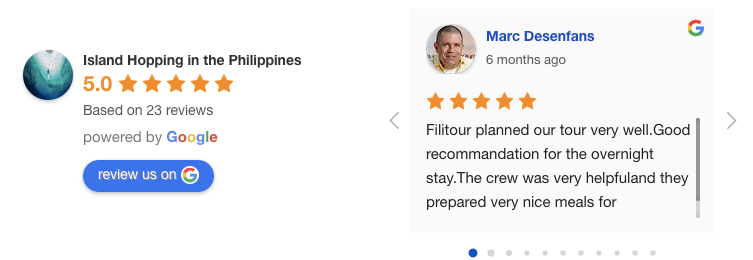
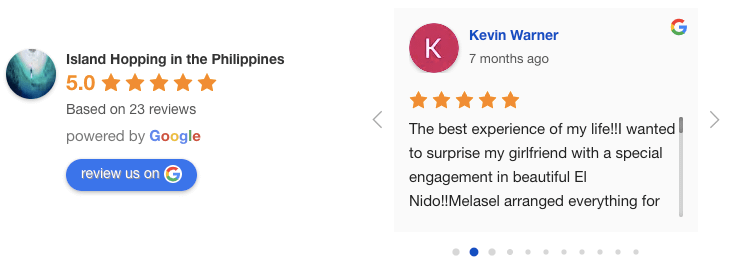
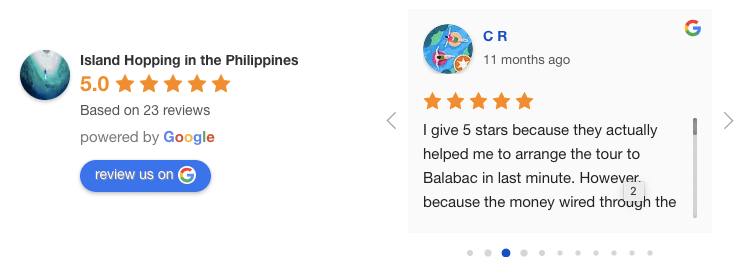
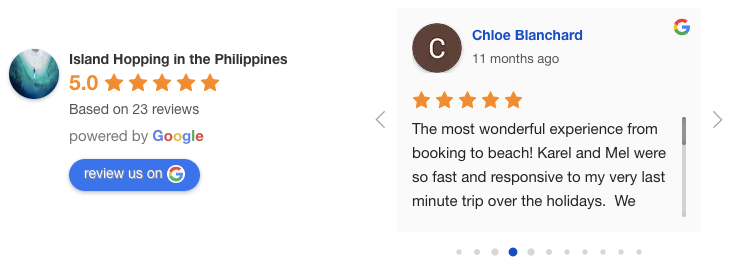
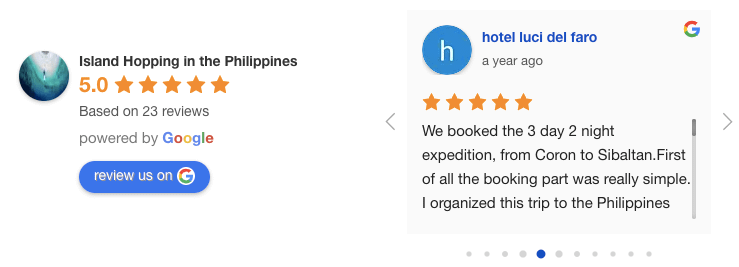
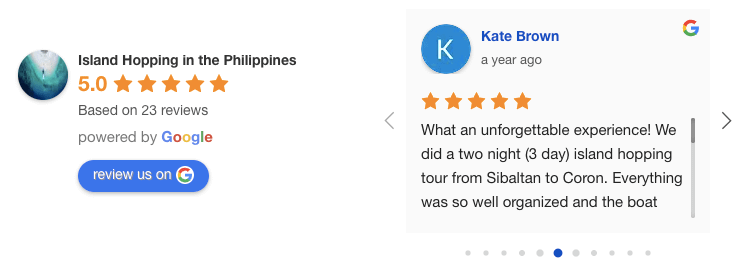
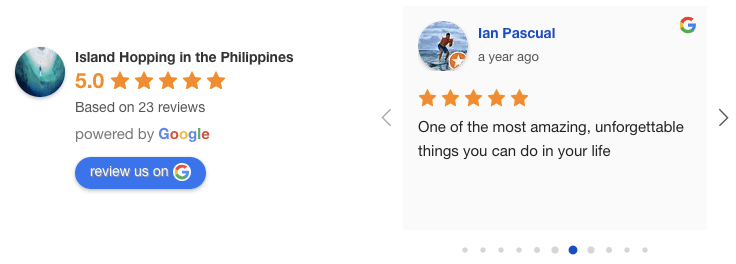
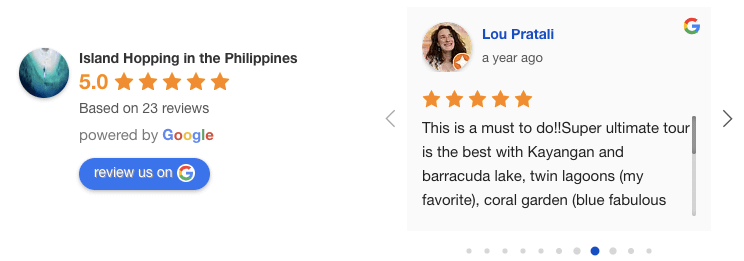
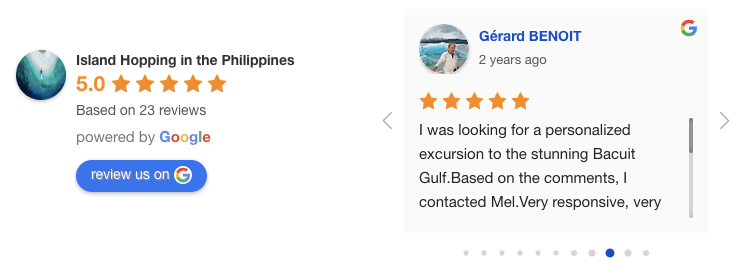
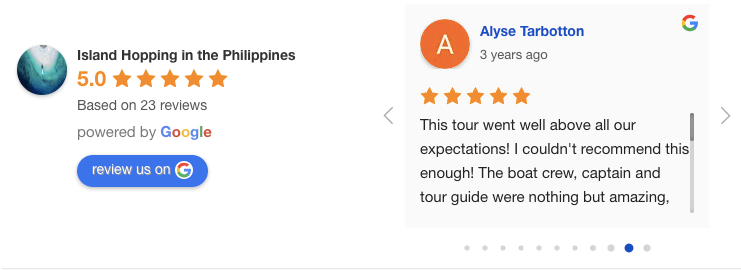
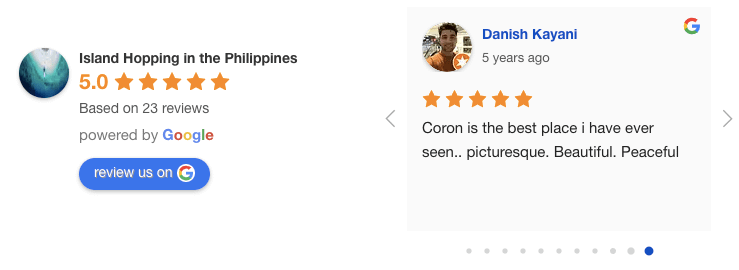
I think it’s really neat how many self-sustaining technologies are available to us now days. I find the atmospheric water generators you pointed out to be really interesting. They actually draw water from the humidity in the air, which I imagine is very effective in the Philippines.